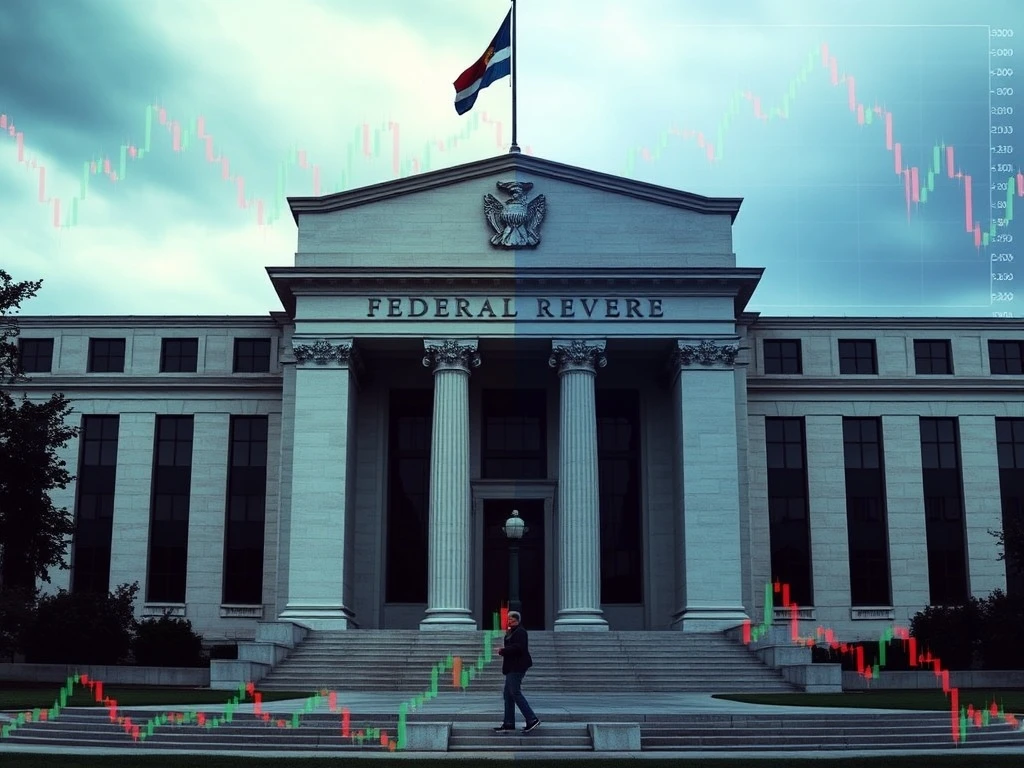Fed Holds Rates Steady: How Inflation and Political Pressure Shape Crypto Markets

The Federal Reserve’s decision to hold interest rates steady has sent ripples through the crypto markets. With inflation still elevated and political pressure mounting, what does this mean for Bitcoin and altcoins? Let’s break down the key takeaways.
Why Did the Fed Hold Rates Steady?
The Federal Open Market Committee (FOMC) maintained the federal funds rate at 4.25–4.50%, marking the fourth consecutive pause since December 2024. Here’s why:
- Inflation concerns: Persistent price pressures remain a key hurdle.
- Strong labor market: Low unemployment supports a cautious approach.
- Geopolitical risks: Trade tensions and global uncertainty add volatility.
Diverging Views on Rate Cuts
The FOMC was split, with two members pushing for a 25-basis-point cut. Meanwhile, market expectations show:
| Scenario | Probability |
|---|---|
| 25-basis-point cut in September | 65% |
| No change | 34% |
| 50-basis-point cut | 1% |
How Does This Impact Crypto Markets?
Monetary policy directly influences crypto liquidity and investor sentiment. Key takeaways:
- Risk appetite: Prolonged high rates may curb speculative investments.
- Dollar strength: A steady Fed policy could bolster USD, pressuring Bitcoin.
- Inflation hedge: If inflation persists, crypto may regain appeal as a store of value.
What’s Next for the Fed and Crypto?
With September looming as a potential turning point, traders should watch:
- CPI data: Inflation trends will dictate Fed actions.
- GDP growth: Stronger-than-expected Q2 growth complicates rate-cut arguments.
- Political pressure: Trump’s public criticism adds unpredictability.
The Fed’s cautious stance underscores its balancing act—taming inflation without stifling growth. For crypto investors, patience and data-driven strategies will be key in navigating this uncertain landscape.
Frequently Asked Questions (FAQs)
1. Why didn’t the Fed cut rates in July?
The Fed cited persistent inflation, a strong labor market, and geopolitical risks as reasons to hold rates steady.
2. When is the next Fed meeting?
The next FOMC meeting is in September, which markets see as a potential turning point for rate cuts.
3. How do Fed rates affect Bitcoin?
Higher rates typically strengthen the USD and reduce risk appetite, which can pressure Bitcoin prices.
4. What’s the market’s expectation for September?
CME FedWatch shows a 65% chance of a 25-basis-point cut, but uncertainty remains high.
5. Could political pressure force the Fed to cut rates?
While public criticism adds pressure, the Fed prioritizes data over politics in its decisions.








